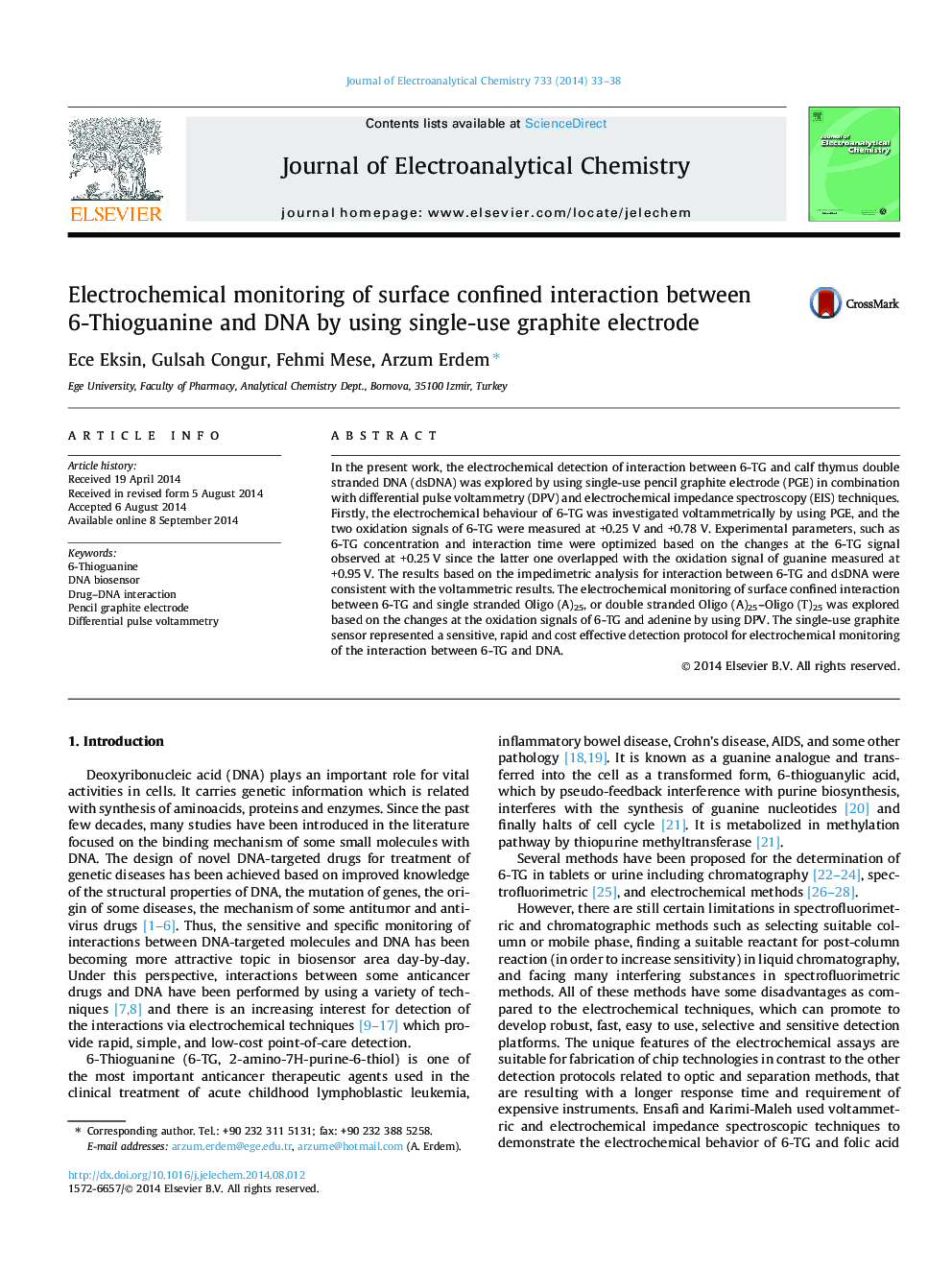| Article ID | Journal | Published Year | Pages | File Type |
|---|---|---|---|---|
| 218597 | Journal of Electroanalytical Chemistry | 2014 | 6 Pages |
•The interaction of 6-Thioguanine with DNA was investigated at PGE surface.•The electrochemical behaviour of 6-TG at PGE was investigated using DPV.•EIS was also performed to evaluate the surface confined interaction of 6-TG with DNA.•The interaction of 6-TG and Oligo (A)25, or Oligo (A)25–Oligo (T)25 were investigated voltammetrically.
In the present work, the electrochemical detection of interaction between 6-TG and calf thymus double stranded DNA (dsDNA) was explored by using single-use pencil graphite electrode (PGE) in combination with differential pulse voltammetry (DPV) and electrochemical impedance spectroscopy (EIS) techniques. Firstly, the electrochemical behaviour of 6-TG was investigated voltammetrically by using PGE, and the two oxidation signals of 6-TG were measured at +0.25 V and +0.78 V. Experimental parameters, such as 6-TG concentration and interaction time were optimized based on the changes at the 6-TG signal observed at +0.25 V since the latter one overlapped with the oxidation signal of guanine measured at +0.95 V. The results based on the impedimetric analysis for interaction between 6-TG and dsDNA were consistent with the voltammetric results. The electrochemical monitoring of surface confined interaction between 6-TG and single stranded Oligo (A)25, or double stranded Oligo (A)25–Oligo (T)25 was explored based on the changes at the oxidation signals of 6-TG and adenine by using DPV. The single-use graphite sensor represented a sensitive, rapid and cost effective detection protocol for electrochemical monitoring of the interaction between 6-TG and DNA.
Graphical abstractFigure optionsDownload full-size imageDownload as PowerPoint slide
